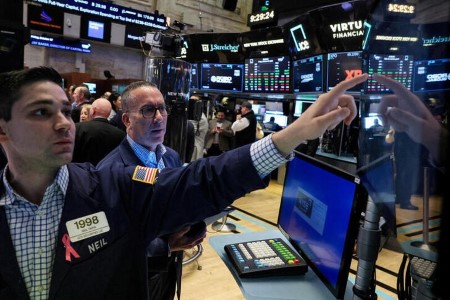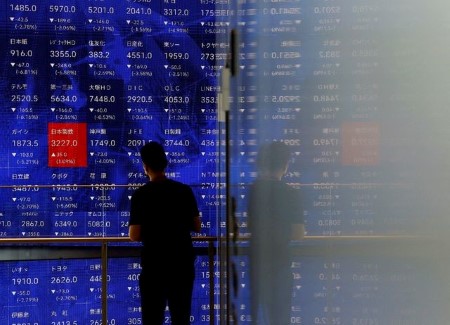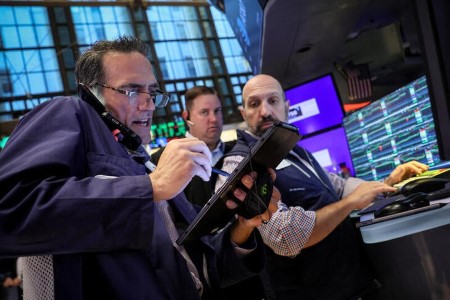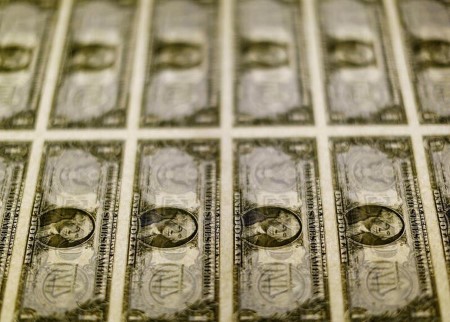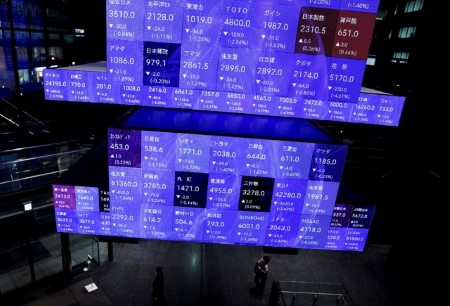The Dow notched a record high close on Thursday in mixed trading following robust US economic data, while artificial intelligence chipmaker Nvidia dropped after its largely in-line forecast failed to impress investors.
The US economy grew faster than initial estimates due to strong consumer spending, the Commerce Department reported, supporting expectations the US is likely to avoid a recession.
“Downward revisions to inflation accompanying an upward revision to spending builds the case for a soft landing,” said Jeffrey Roach, chief economist for LPL Financial.
Nvidia’s quarterly revenue forecast late on Wednesday disappointed investors accustomed to the chipmaker beating expectations by massive margins in recent quarters.
Nvidia’s stock fell over 6%, trimming its 2024 gain to 137%.
Other AI-related stocks were mixed. Microsoft gained 0.6%, while Google-owner Alphabet dipped 0.7%.
Broadcom and Advanced Micro Devices each slid almost 1%.
“It’s too early to put the bear suit on for AI related companies. We think there’s still more upside,” said Terry Sandven, chief equity strategist at US Bank Wealth Management. “We see the AI revolution still in the relatively early innings and that bodes well for tech names.”
Apple rose 1.5% after Citigroup named the iPhone maker its top AI pick.
Apple and Nvidia are in talks to invest in OpenAI as part of a new fundraising round that could value the ChatGPT maker above USD 100 billion, according to media reports.
The Dow Jones Industrial Average rose 0.59% to 41,335.05 points, an all-time closing high. The S&P 500 index ended barely changed at 5,591.96 points, just below its July record high close as expectations for a September interest rate cut remained robust.
The Nasdaq declined 0.23% to 17,516.43 points.
A Labor Department report showed marginally lower-than-expected jobless claims for the previous week.
The July Personal Consumption Expenditures report, due on Friday, could offer hints on the central bank’s monetary policy easing trajectory.
CrowdStrike gained 2.8% after the cybersecurity company beat quarterly revenue estimates, while Dollar General slumped 32% after slashing its annual sales and profit forecasts.
Advancing issues outnumbered falling ones within the S&P 500 by a 2.1-to-one ratio.
The S&P 500 posted 68 new highs and four new lows; the Nasdaq recorded 91 new highs and 90 new lows.
Volume on US exchanges was relatively light, with 10.5 billion shares traded, compared to an average of 11.6 billion shares over the previous 20 sessions.
(Reporting by Purvi Agarwal and Johann M Cherian in Bengaluru; Editing by Pooja Desai, Shounak Dasgupta, Shinjini Ganguli, and Richard Chang)







 DOWNLOAD
DOWNLOAD




